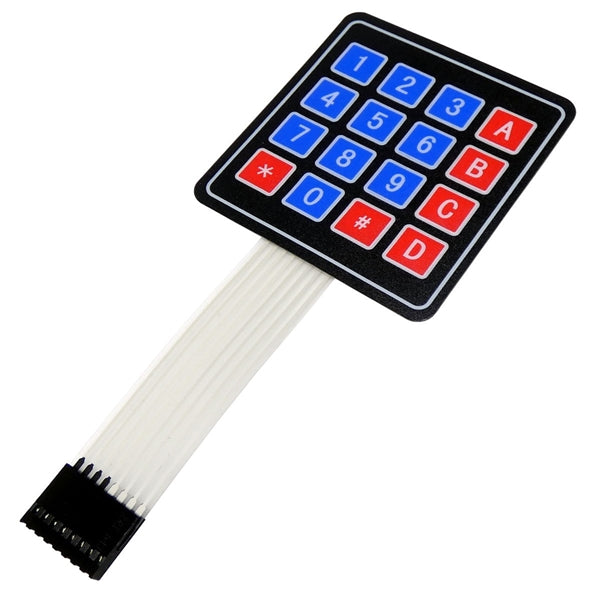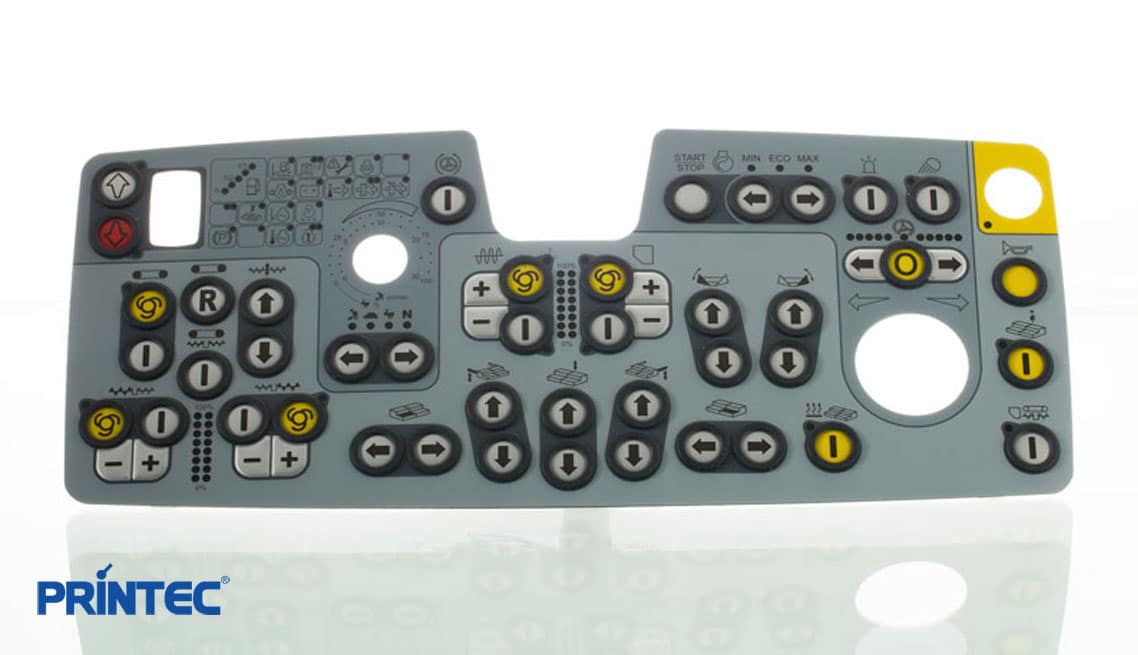Many product developers prefer working with a proven membrane switch manufacturer for custom interfaces.
Many product developers prefer working with a proven membrane switch manufacturer for custom interfaces.
Blog Article
All Concerning Membrane Switch Over: Recognizing Its Design and Performance
When you assume regarding the control interfaces in modern-day gadgets, membrane layer switches often come to mind. These components are more than simply switches; they mix style and functionality perfectly. Comprehending how they function and what makes them reliable can transform your point of view on everyday electronic devices. There are nuances to their style and efficiency that you might not be aware of. Let's discover what sets membrane switches over apart from other control systems.
What Are Membrane Layer Switches?

Membrane layer switches can additionally be tailored pertaining to shape, dimension, and graphics, enabling manufacturers to develop distinct user interfaces tailored to particular products. In general, membrane layer buttons play a considerable function in improving individual experience across a wide variety of applications.
How Membrane Layer Switches Job
When you push a secret on a membrane layer button, it turns on a simple yet efficient mechanism. The top layer, often constructed from adaptable product, pushes down onto a conductive layer under it. This action bridges the void in between conductive traces, completing an electrical circuit. As quickly as the circuit closes, it sends out a signal to the tool's controller, which translates your input.
You'll observe that the tactile feedback differs based on the switch design, providing either a soft click or a more obvious reaction. When you launch the key, the membrane layer returns to its original setting, reopening the circuit and stopping the signal. This procedure occurs almost instantaneously, guaranteeing a receptive individual experience.
Membrane layer buttons are preferred due to their resilience and resistance to dust and wetness, making them perfect for various applications, from home devices to clinical devices. Understanding this operation aids you appreciate their extensive usage.
Trick Elements of Membrane Buttons
Understanding the vital elements of membrane layer switches is basic for realizing their functionality and style. The safety layer shields versus environmental factors and put on, expanding the button's life expectancy. By recognizing these elements, you'll gain insight into just how membrane layer switches run and their relevance in various applications.
Products Used in Membrane Layer Switch Design
The efficiency and resilience of membrane switches heavily rely on the products made use of in their style. You usually run into polyester and polycarbonate as primary substrates because of their excellent strength and versatility. These materials resist scrapes and chemicals, making them ideal for demanding settings.
The conductive layers often use silver or carbon, picked for their reliability and conductivity. membrane switch manufacturer. Silver gives superior performance, while carbon is a cost-effective alternative. For the overlay, you might take into consideration a matte or shiny surface, depending upon your aesthetic requirements and user experience
Adhesives play an important duty as well; they bond layers firmly and assure durability. Ensure to pick adhesives that endure ecological factors like temperature level and moisture. Do not ignore the importance of a good printing strategy for graphics, as it boosts both capability and aesthetic allure. Choosing the ideal products will guarantee your membrane switch stands the test of time.
Layout Considerations for Membrane Layer Switches
While designing membrane layer switches, it's crucial to consider numerous factors click here for more info that affect their performance and customer experience. Start by concentrating on the layout and switch dimension; ensure they're user-friendly and easy to navigate. Consider the responsive comments you want to supply-- will individuals require a recognizable click or a softer touch? Furthermore, consider the products you'll use, as they'll impact durability and appearances.
Don't forget the graphic layout; clear labeling and color contrast are substantial for visibility. Confirm your style suits ecological factors, like wetness or temperature variations, which might influence efficiency. Remember address the significance of testing models with actual users to gather responses and make essential adjustments. This repetitive process assists you improve the layout, validating it meets both practical and aesthetic needs efficiently. By thoroughly considering these aspects, you'll create a membrane switch that enhances use and satisfaction.
Applications of Membrane Layer Buttons
Membrane layer switches are versatile parts discovered in various applications, from industrial tools to customer electronics. You'll see their impact in equipments that need resilient interfaces and in tools that profit from smooth designs. Recognizing these applications assists you value the performance and practicality of membrane layer switches in everyday modern technology.
Industrial Devices Use
When you're looking to boost the capability of industrial tools, membrane layer switches supply a trustworthy option that combines sturdiness with user-friendly design. These buttons are excellent for harsh settings, offering resistance to dirt, moisture, and chemicals. Welcome membrane switches to enhance your operations and enhance general performance.
Consumer Electronics Combination
In the domain of customer electronic devices, membrane layer switches play a crucial function in boosting individual interaction and gadget capability. Membrane buttons likewise guarantee sturdiness and resistance to dust and wetness, prolonging the life-span of your electronics. By selecting membrane layer switches, you boost not just the capability yet likewise the style of your tools, making everyday interactions smooth and enjoyable.
Advantages and Drawbacks of Membrane Layer Switches
While membrane buttons use a range of advantages, they additionally feature some disadvantages that you need to consider. One substantial advantage is their small design, making them suitable for space-constrained applications. They're likewise affordable, supplying a durable solution with a low manufacturing price. Additionally, their smooth surface area is easy to tidy, improving health in atmospheres like health centers.

Nevertheless, there are downsides. Membrane article source buttons can have a shorter life expectancy contrasted to mechanical buttons, especially under heavy use. They can additionally be much less responsive, which may influence customer responses during procedure. If harmed, repairing them can be difficult and frequently calls for complete substitute. Inevitably, their level of sensitivity to extreme temperature levels and environmental conditions may restrict their performance in particular setups. Balancing these advantages and disadvantages will assist you establish if membrane switches are the appropriate fit for your task.
Frequently Asked Inquiries
For How Long Do Membrane Layer Switches Commonly Last?
Membrane changes normally last between 5 to ten years, depending on use and ecological conditions. You'll desire to evaluate aspects like wear, exposure to dampness, and temperature fluctuations to assess their longevity successfully.
Can Membrane Layer Switches Over Be Customized for Details Designs?
Yes, you can personalize membrane layer switches to fit particular styles (membrane switch manufacturer). You'll have the liberty to choose colors, shapes, and designs that match your task's requirements, ensuring they mix flawlessly with your overall aesthetic
What Is the Price Array for Membrane Layer Change Manufacturing?
The expense range for membrane button manufacturing generally falls in between $1 and $10 per unit, depending on factors like design intricacy, amount, and materials. You can obtain quotes from producers to find the very best option.

Are Membrane Layer Switches Over Water Resistant or Resistant?
Membrane layer buttons can be designed to be water resistant or immune, depending upon materials made use of and building approaches. If you require them for wet environments, assure you specify those demands throughout the layout process.
Just How Do Membrane Switches Compare to Conventional Switches?
Membrane layer switches are usually thinner and much more versatile than traditional buttons, offering a smooth layout. They're often much easier to clean up and integrate, however may not offer the tactile feedback you're utilized to with mechanical choices.
Final thought

Report this page